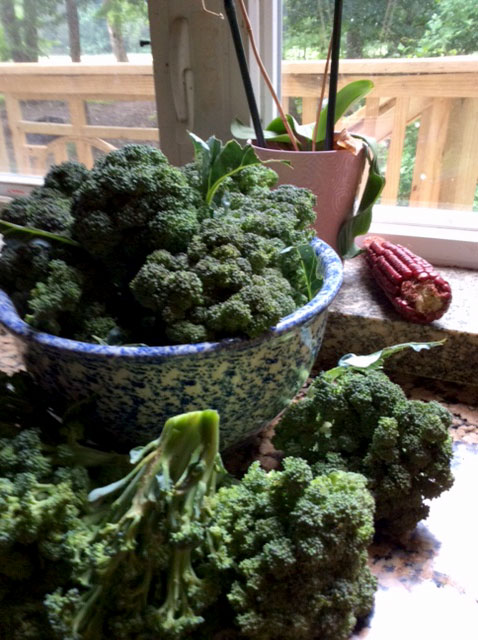 Lisa Dermer & Ira Wallace
Lisa Dermer & Ira Wallace
Last week we finished harvesting our spring-planted cabbage and broccoli. Now it’s time to sow our first seedling bed for our fall brassicas: besides cabbage and broccoli, we’ll add cauliflower and Chinese cabbage. Later we’ll make sowings of fall carrots, beets, lettuce, rutabaga, turnips, and greens like spinach, chard, kale, and mustards.
Sowing outdoors during high heat can be tricky, but if you follow these tips you’ll find it’s worth the effort:
1. Sow in a closely-spaced nursery bed and transplant later. This lets you concentrate your efforts (keeping the soil moist and weed-free) on a small, more manageable area. (Don’t do this for crops that don’t transplant well, like carrots.)
2. Choose a location with afternoon shade. This will protect the sprouting seeds from drying out.
3. Sow under lightweight row cover or the newer temperature-neutral proteknet. Both protect from insect pests and help retain soil moisture.
 4. Sow successions! Two weeks after your first sowing make another planting of the same varieties or other, earlier-maturing types.
4. Sow successions! Two weeks after your first sowing make another planting of the same varieties or other, earlier-maturing types.
5. Count backwards. Plan for cool-season crops to mature when cool weather hits, and use the days to maturity to plan when to sow.
6. Transplant and/or thin your plantings. Giving plants more space helps their roots access enough moisture. Young seedlings grow faster in hot weather, so plan for quick turn-arounds. Summer-sown brassicas may be ready to transplant in 4 weeks or less (they should have 3 true leaves).
Check out our Fall and Winter Quick Reference for more details about timing and what to plant for fall and winter harvest.
Order now if you haven’t already reserved your planting stock for garlic and perennial onions. Each order comes with a Garlic and Perennial Onion Growing Guide to get you started.
